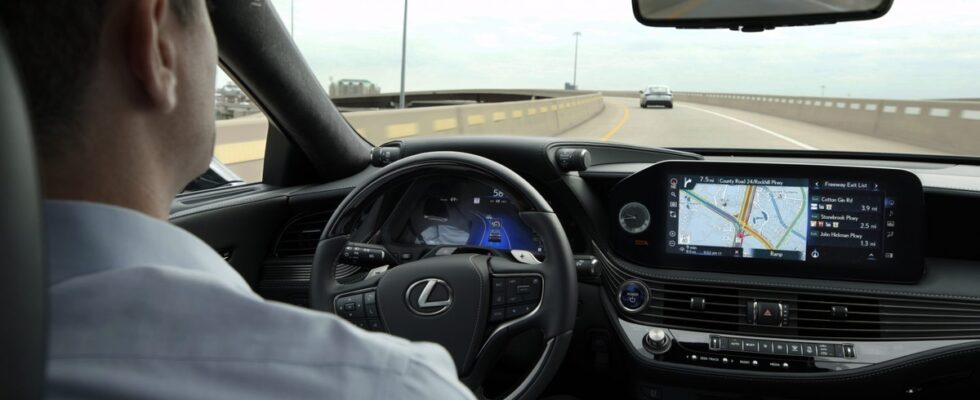The majority of autonomous driving systems currently available on production cars are SAE level 2. They therefore require the constant supervision of the driver, who remains solely responsible for his vehicle.
However, this does not mean that all these systems are equal. For example, some are capable of performing actions that others do not support. Additionally, the methods used to ensure that the driver is serving as system supervisor differ.
The IIHS (Insurance Institute for Highway Safety), an American association founded by various insurance companies, has looked into the safety of using these systems. The points that were analyzed do not directly concern the autonomous driving capabilities of the vehicles, but rather their operating restrictions intended to make them safer.
The supervision of the driver’s hands and eyes, the various alerts made to the driver, the ability of the car to stop if the driver does not respond, to inform its manufacturer and to block the use of autonomous driving for the rest of the drive, the absence of automatic lane changes not initiated by the driver, checking the driver’s attention before leaving after stopping in traffic, the possibility for the driver to intervene on the steering without this deactivating lane centering, the need to buckle one’s seat belt and have automatic emergency braking and lane keeping assist activated to use the partially autonomous driving system.
Numerous security breaches noted by IIHS
These seven points, rated “good”, “acceptable”, “insufficient”, or “bad”, according to a test protocol, then give an overall score to each of the systems and models tested. Fourteen were tested by the IIHS, and none received a “good” overall rating.
It was the Lexus LS equipped with the Lexus Teammate system with Advanced Drive function which won, being the only one to obtain an “acceptable” rating. The GMC Sierra with General Motors’ Super Cruise system and the Nissan Ariya with ProPILOT Assist with Navi-link received an overall rating of “unsatisfactory,” while the other eleven models received a minimum rating of “poor.” This is particularly the case for the different versions of Autopilot on the Tesla Model 3, but also for the less advanced systems offered by the Lexus LS and the Nissan Ariya.
“We evaluated partial automation systems from BMW, Ford, General Motors, Genesis, Lexus, Mercedes-Benz, Nissan, Tesla and Volvo”explains David Harkey, president of the IIHS. “Most of them do not include adequate measures to prevent abuse and prevent drivers from distracting themselves from what is happening on the road.” He notes, however, that “In each category, at least one system performed well. This means that fixes are readily available and, in some cases, all it takes is a simple software update.”
The search for autonomy at all costs with Autopilot FSD (Full Self-Driving, or fully autonomous driving capability) from Tesla did not appeal to the IIHS, which gave it the most “poor” sub-ratings. Let us recall in passing that its capabilities across the Atlantic go further than those available in Europe, where the system requires more intervention from the driver.
In our regions, Euro NCAP has already been testing the safety of autonomous driving systems since 2020. The organization evaluates not only their abilities to monitor and inform the driver for cooperative driving, but also their performance in intervening to avoid an accident. . Euro NCAP is more lenient than the IIHS by frequently granting the maximum security rating to certain systems.
